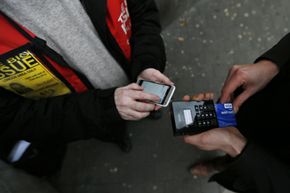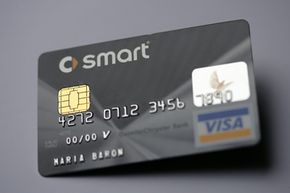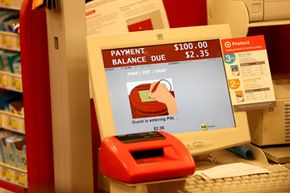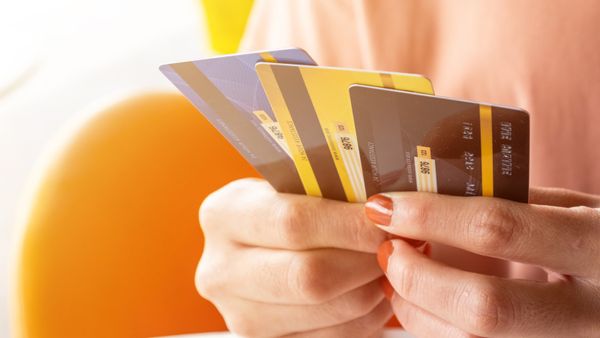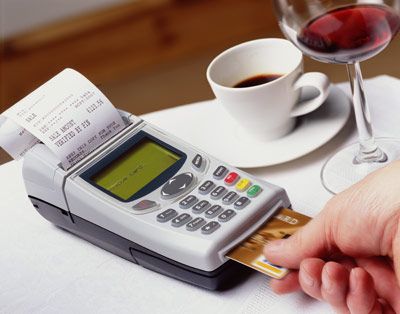Every credit card holder in America knows the "swipe and sign" checkout ritual. Line up the magnetic stripe, swipe the card, press "OK" for the amount to be charged, and then sign your illegible scrawl on the screen. The swipe and sign system is so common in U.S. that American travelers are often shocked to learn that almost no other country still does it this way. The international standard for credit card security is called "chip and PIN," and it's now in American wallets.
With chip and PIN cards, the credit card data is stored on a tiny computer chip — not a magnetic stripe — and customers punch in a four-digit PIN (personal identification number) instead of signing the screen.
Advertisement
Chip and PIN credit cards made headlines in the U.S. in December 2013 when hackers stole credit and debit card information from 40 million Target customers, and the names and e-mail addresses of 70 million more [source: Harris]. The craft store Michaels and retailer Neiman Marcus were also victims of massive data breaches. Security experts believe hackers remotely installed malware on the companies' checkout machines that stole credit card data each time a customer swiped a card [source: Hu].
In the wake of the data breach, Target pledged to switch its store-branded credit and debit cards to the new chip and PIN technology [source: Harris]. Visa and Mastercard announced similar plans to switch from magnetic stripes to chip and PIN by October 2015 [source: Gara].
What will the credit card switch mean for the average American consumer? Are chip and PIN cards really more secure than magnetic stripes? And what if you want a chip and PIN card now? Do American stores even accept them?
Let's start with a quick history of chip and PIN technology and how it really works.
Advertisement
